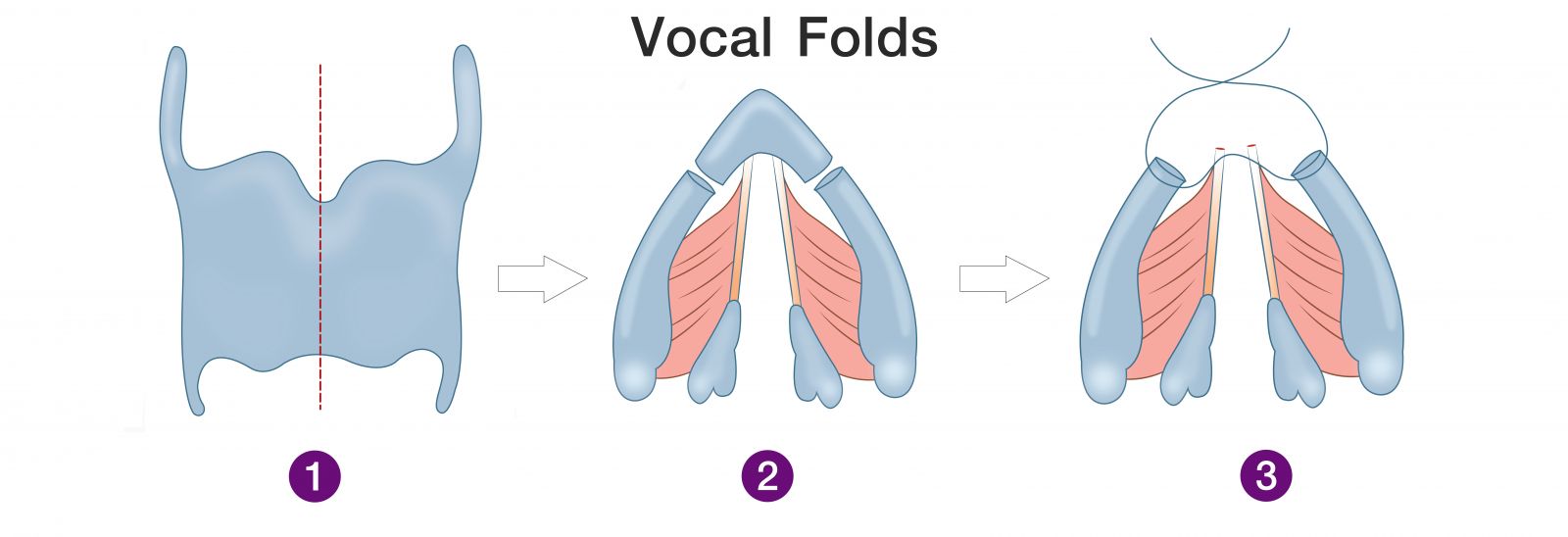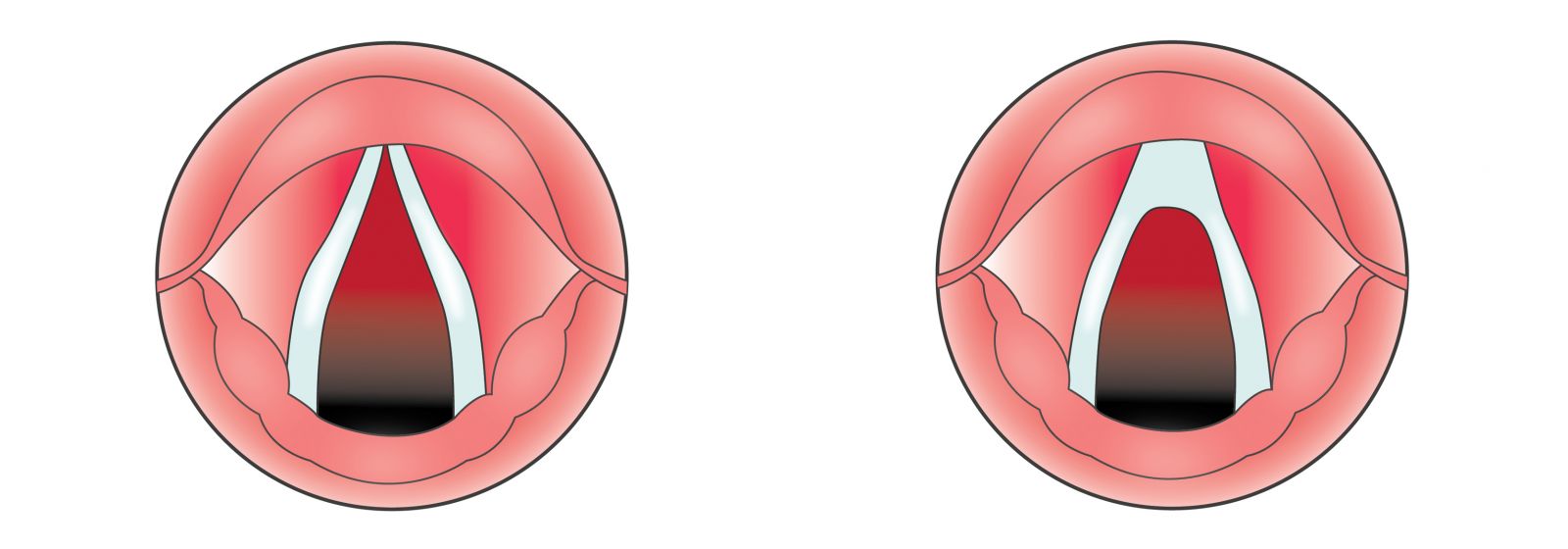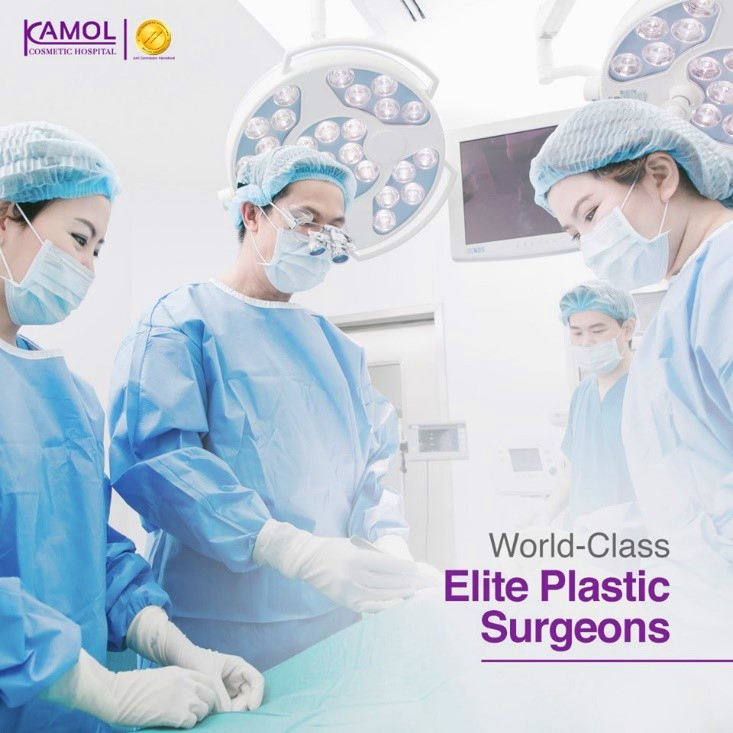Voice Feminization Surgery (VFS) in Bangkok, Thailand
Voice affirmation surgery (VAS) is a procedure designed to achieve a more feminine speaking voice. Sometimes referred to as gender-affirming voice care, the procedure is complex and should only be performed by surgeons with specialized training and equipment. A speech pathologist will assist patients in adapting their voices to achieve communication patterns consistent with gender identity.
Styles of speech, voice tones, accents, and language style are highly personal and vary greatly. Voice training alone can take years of frustrating and expensive lessons, and success is often elusive. Through voice affirmation surgery, pitch, resonance, and volume can be altered to provide a more gender-appropriate speaking voice. Post-surgery, one week of silence is required before the introduction and lessons from trained coaches or speech pathologists.
1. Open Feminization Laryngoplasty, Cricothyroid Approximation (CTA), Thyroplasty type IV.

Picture 1 Shows larynx anatomy.

Picture 2 shows Cricothyroid approximation surgery techniques and result
Surgical technique
The goal of this operation is to surgically move the thyroid cartilage closer to the cricoid with non-absorbable stitches. The vocal cords are not directly touched but passively stretched. This procedure increases vocal pitch by stimulating the contraction of the cricothyroid muscle with the suture. This increases the distance between the vocal fold attachments and raises the tension of the vocal fold. The cricoid and thyroid cartilage are moved as close as possible because postoperative reversion to a slightly lower pitch is inevitable to some extent as swelling resolves and tissues relax. The fundamental frequency of the voice rises to overlap the biological female range perceptively. The operation is performed under general anesthesia. The duration of the surgery is about 40-50 minutes, and the surgical reduction of Adam’s apple can be performed simultaneously. Generally, the patient doesn’t feel any postoperative pain; however, pain may occur if Adam’s apple surgery is done. This pain is mild and easily controllable with painkillers.
A transverse incision scar is made in an existing skin crease and, if possible, at the level of the vertical midpoint of the thyroid cartilage on the throat, a minor surgical opening, around 2 cm, leaving an almost invisible scar.
Advantages
-
This procedure does not interfere with or create scars on the vocal cords, potentially leading to permanent hoarseness.
-
Theoretically reversible if the patient is dissatisfied.
-
The surgical reduction of Adam’s apple can be performed simultaneously.
Disadvantages
-
Requires a neck incision.
-
Long-term results have yet to be discovered as it's a newer procedure.
2. Open Laryngoplasty with anterior vocal fold shaving technique
This surgical technique, open laryngoplasty, is performed under general anesthesia. The procedure involves making a small incision (approximately 2-4 cm) in the midline of the neck, just above the thyroid cartilage. The surgeon then opens the cartilage at the midline and removes the central segment.
The anterior part of the true and false vocal folds are then removed and pulled together. This procedure is typically done to reduce the size of the vocal folds and improve the patient's voice.
In this procedure, you can reduce the size of your Adam's apple through the same incision. Some patients might experience a vibrating quality to their voice after surgery for a few weeks, but it usually improves back to normal eventually.

Picture 3 Shows Open laryngoplasty with anterior vocal fold shaving technique

Picture 4 shows laryngoplasty with shaving of the anterior vocal folds and the result.
Advantages
-
Comfortable speaking pitch
-
Alters the physical size of the larynx to a close approximation of the female larynx
-
The high tone of the frequency
Disadvantages
-
The roughness of the voice in some patients
-
Risks of infection and airway compromise in the immediate postoperative
-
The procedure is longer and more complicated.
-
Long time for recovery
Pre-operation for Voice Feminization Surgery
Before undergoing voice feminization surgery, you may be asked to follow specific instructions to prepare for the procedure. These instructions may vary depending on the particular needs of the individual and the recommendations of their surgeon, but they may include:
- Quit smoking and avoid tobacco use for a certain period before and after the surgery, as smoking can interfere with healing and increase the risk of complications.
- Avoid medications that can interfere with bleeding or healing, such as aspirin or nonsteroidal anti-inflammatory drugs (NSAIDs), unless instructed otherwise by your surgeon.
- Avoid consuming alcohol for a certain period before and after the surgery.
- Fast for a certain period before the surgery, as directed by your surgeon.
- Inform your surgeon about any medications you take, including prescription, over-the-counter, and herbal supplements.
- Arrange for transportation to and from the surgery, as you may be unable to drive after the procedure.
- Follow any other specific instructions your surgeon provides, such as showering with an antimicrobial soap before the surgery.
Follow these instructions carefully to ensure the best possible outcome from the surgery. Discuss the instructions with your surgeon if you have any questions or concerns.
Post-operative Care for Voice Feminization Surgery
- Day 1 to 7: You must remain silent until the first follow-up. There are no food and drink restrictions.
- Day 3 to 7: Keep the vocal cords lubricated by drinking lots of water and nebulizing with a sterilized saline solution.
- Day 8 to 10: After the vocal rest period, a new videolarygostroboscopic and spectrum-acoustic study is performed. The outer stitches are removed, the dressing is changed, and speech therapy rehabilitation can start.
The speech therapist will teach the patient how to use her new voice as effectively as possible. The final result will be seen between the third and eighth month after surgery. For this reason, a follow-up is recommended in the third, sixth, and twelfth months after surgery.
Note:
The surgical team reserves the right to assess the feasibility case by case if the upcoming patient has already undergone the voice change surgery using a different technique and is not satisfied with the result of their voice.
To prevent acid reflux, it’s highly recommended to avoid caffeine, chocolate, peppermint, fatty foods, acidic foods, soda, and alcoholic drinks.
One week off from work is sufficient as long as you can follow the voice restrictions. Two weeks off are required if you need to use your voice.
Risk and Complications for Voice Feminization Surgery
As with any surgical procedure, voice feminization surgery carries certain risks and potential complications. These may include:
- Bleeding
- Infection
- Scarring
- Changes in voice quality or pitch that are not satisfactory to the patient
- Damage to the vocal cords or surrounding tissues
- Difficulty speaking or swallowing
- Anesthesia risks
Getting to Know for Voice Feminization Surgery
Kamol Hospital provides two techniques of VFS.
Why does Kamol Cosmetic Hospital provide two techniques of voice feminization surgery/ VFS ?
Are the results from VFS Permanent?
The results from VFS are considered to be permanent, meaning that the changes to the voice are...
Contra-indications of voice surgery
There are a number of contra-indications to voice surgery, which are factors that would make a patient...
Video : Voice Feminization / VFS
Voice Feminization Speech Therapy
Voice feminization speech therapy is a treatment to refine your voice, making it sound more feminine. The treatment has to be done before and after the voice feminization surgery to provide effortless control of speech. Before voice feminization surgery, your voice must be assessed and tuned to give you a proper speech. After voice feminization surgery is performed, you would have to learn to feminize your voice and how to speak effortlessly. A specialized, skilled speech therapist provides this program, and it includes multiple sessions of practice until you complete all aspects of voice feminization therapy under the guidance of our speech therapist. Practicing without the specialist's advice may result in edema of your vocal cords and can cause a failure in our training program.
Voice feminization training program @ Kamol Cosmetic Hospital
Around one week before having voice feminization surgery, your voice and speech will be assessed by our speech therapist, who will help you tune your voice and let you speak with the least effort in preparation for talking in your new voice after the surgery.
After the voice feminization surgery, you will meet with the speech therapist to assess your vocal cord function and help you speak healthily. This session will be held in the second and fourth weeks after the surgery. You will be given daily voice exercises as homework to yield the best results. Monthly online follow-up meetings with our speech therapist can be arranged via Skype so no matter where you are you can continue to train and learn to speak in a female range and pattern with the correct intonation. Each meeting will be around one hour.
Exploring the Popularity of VFS at Kamol Cosmetic Hospital
Kamol Cosmetic Hospital is a popular choice for VFS (Voice Feminization Surgery) treatments for several reasons.
First, the hospital is renowned for its team of skilled and experienced medical professionals who are experts in the field of cosmetic surgery. This ensures that patients receive the highest level of care and attention during their treatment.
Second, Kamol Cosmetic Hospital uses the latest technology and techniques in their VFS treatments, which allows for more effective and efficient results.
Third, the hospital has a track record of successful VFS treatments and has received positive reviews and testimonials from satisfied patients.
Finally, Kamol Cosmetic Hospital offers a range of VFS treatment options and works with patients to create personalized treatment plans to suit their specific needs and goals. This helps to ensure that patients receive the most effective treatment for their individual situation.
Overall, the combination of expert medical staff, state-of-the-art technology, positive patient outcomes, and personalized treatment plans make Kamol Cosmetic Hospital a popular choice for VFS treatments.
Are the results from VFS Permanent?
Voice feminization surgery is a surgical procedure designed to alter the voice of individuals who identify as transgender or non-binary to better align with their gender identity. The goal of the surgery is to create a voice that is perceived as feminine, with a higher pitch, lighter tone, and improved articulation.
“The question of whether the results from voice feminization surgery are permanent is a common one among those considering the procedure.”
In general, the results from voice feminization surgery are considered to be permanent, meaning that the changes to the voice are long-lasting and do not revert back over time. However, the success and permanency of the results can vary depending on various factors, such as:
The individual's anatomy
The surgeon's skill and experience
The patient's vocal hygiene and post-operative care.
It's important to note that:
While the surgical procedure itself can bring about significant and lasting changes to the voice, the process of feminizing the voice is not limited to surgery alone. Voice therapy and speech coaching can also play an important role in achieving a desired feminine voice. In some cases, speech therapy is recommended after the surgery to help the individual learn to use their new voice effectively and to develop good vocal habits.
The process of voice feminization is not a one-time event and can take time, patience, and dedication. Some individuals may experience setbacks or may need multiple surgeries to achieve their desired voice.
“With proper care and attention to vocal hygiene, the results from voice feminization surgery are often long-lasting and can bring significant improvements to an individual's quality of life and confidence.”
In conclusion,
While the results from voice feminization surgery are generally considered to be permanent, the success and permanency of the results can vary depending on a number of factors. The process of feminizing the voice is a journey that requires patience, dedication, and a combination of surgical and non-surgical approaches.
Why is Kamol Hospital in Thailand a destination for Voice Feminization?
Thailand has a reputation for being an open society for transgender people, and this has resulted in hospitals becoming experts in surgery that helps individuals become physically complete. Thailand offers first-class hospital treatment with highly experienced surgeons who perform hundreds of SRS surgeries each year and have mastered the procedure. Additionally, Thailand is generally significantly cheaper than other countries, so the surgery is also relatively more affordable at a destination like Kamol Hospital. To summarize, Kamol Hospital is a modern, luxury hospital and offers a modern, luxurious serviced apartment hotel for recovery, all at a significantly lower cost than other hospitals around the world.
Frequently Asked Questions
A: Voice Feminization Surgery (VFS) is a surgical procedure designed to modify the pitch and resonance of your voice to sound more feminine.
It's a common choice for transgender women and individuals whose gender identity doesn't align with their assigned sex at birth.
VFS can significantly improve vocal communication and help you feel more comfortable and confident expressing yourself authentically.
A: The procedure focuses on altering the vocal cords and the structures within the larynx (voice box) that influence pitch and resonance. There are several techniques, but some of the most common include:
- Cricothyroid approximation (CTA): This technique brings the cricoid cartilage and thyroid cartilage closer together, increasing the tension on the vocal cords and raising the pitch of the voice.
- Anterior glottal web formation: This procedure creates a small web of tissue in the front of the vocal cords, which shortens the vibrating portion and raises the pitch.
- Vocal cord shortening: This involves removing a small portion of the vocal cords to shorten them, thus resulting in a higher pitch.
Before you make any commitments, your surgeon will discuss the most suitable voice feminization technique for your individual needs and goals.
A: You may be a suitable candidate if the following apply to you:
- Are a transgender woman or gender-diverse individual seeking a more feminine voice.
- Have completed hormone therapy (if applicable).
- Are a non-smoker.
- Are in good overall health.
- Have realistic expectations about the outcome of the surgery.
We recommend that you schedule a consultation with a qualified surgeon specializing in VFS at Kamol Cosmetic Hospital. They will evaluate your vocal characteristics, discuss your personal goals, and determine if the procedure is indeed the right option for you.
A: The procedure comes with a number of noteworthy benefits, including:
- Higher-pitched voice: Achieve a voice that aligns with your gender identity.
- Improved vocal resonance: Create a more feminine vocal quality.
- Increased self-confidence: Feel more comfortable and confident when expressing yourself vocally.
- Enhanced communication: Communicate more effectively and authentically.
- Improved quality of life: Experience greater social acceptance and well-being.
A: While VFS is considered to be a safe and straightforward surgery, like any surgical procedure, it does carry some risks and potential complications, such as:
- Voice changes: Temporary or permanent changes in voice quality, such as hoarseness or breathiness.
- Infection: Infection at the surgical site.
- Bleeding: Bleeding during or after the surgery.
- Scarring: Scar tissue formation that can affect vocal cord vibration.
Rest assured we will discuss these risks in depth with you before undergoing the procedure, to ensure you are well-informed and wholeheartedly prepared.
A: After the procedure, you can expect:
- Voice rest: You'll need to avoid speaking or using your voice excessively for a period of time to allow the vocal cords to properly heal. This is very strict.
- Dietary modifications: You may need to follow a soft food diet for a few days while you heal.
- Medications: You may be prescribed certain pain medication and antibiotics to help with pain management and prevent infection.
- Follow-up appointments: You'll have regular follow-up appointments with your surgeon to monitor your progress.
If you are eager to return to work and your normal routine, rest assured most individuals can return to normal activities within a few weeks. However, a complete vocal recovery may take several months.
A: The results of VFS are generally permanent, although some minor changes may occur over time due to natural aging.
However, it's important to note that VFS doesn't change every aspect of your voice. Factors like intonation, speech patterns, and nonverbal communication also contribute to how your voice is perceived.
A: At Kamol Cosmetic Hospital, we are a leading provider of cosmetic and gender affirmation surgery in Bangkok, Thailand. We boast:
- Experienced and highly trained surgeons: Our surgeons are experts in VFS techniques and have a proven track record of successful and satisfactory outcomes.
- World-class facilities: Our hospital is well-equipped with the latest technology and we provide a safe and comfortable environment for your surgery.
- Personalized care: Each treatment plan is tailored to your individual needs and goals.
- Comprehensive aftercare: We’ll provide you with thorough post-operative care and support for a smooth recovery.
- Sterling reputation: We are committed to patient satisfaction and delivering more feminine-sounding voices.
A: How much your voice feminization surgery will cost, ultimately depends on the specific type of technique used and any additional procedures performed alongside it.
During your consultation phase, you will be provided with an accurate, personalized quote.
A: if you are interested in exploring the procedure further and would like to schedule a consultation with one of our surgeons, you can contact us through our website, via email, or over the phone.
We will be more than happy to answer your questions and give you everything you need to take the first step toward achieving your voice goals.







